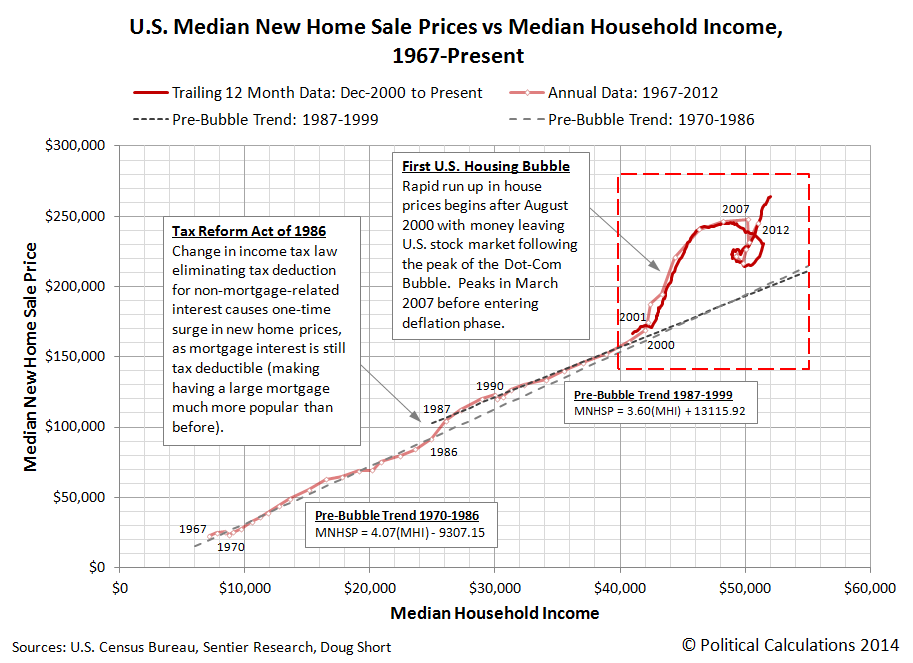Now that the U.S. Census Bureau has finally posted the income data that it collected in January 2014 through the Current Population Survey (over a month late, the Bureau posted its data for February 2014 at the same time), we can now check in on the status of the second U.S. housing bubble. The chart below reveals what we find:
Here, we see that the second U.S. housing bubble continued to inflate through January 2014, although at a slower pace than it did during its initial phase, which ran from July 2012 through July 2013.
The pace of inflation would seem to affected by changes in U.S. mortgage rates, which spiked upward in mid-2013 as the Federal Reserve announced its decision to begin tapering its purchases of mortgage-backed securities and U.S. Treasuries, but which have since fluctuated between 4.3% and 4.5%.
That doesn't seem like a big range to drive the trend for median new home sale prices, but in the latter half of 2013 through January 2014, the rate of change of median new home sale prices would appear to be affected by those fluctuations, rising faster when mortgage rates drop to the low end of the range and rising at a slower pace when rates rise.
That, of course, is the result of median new home sale prices being very much at the economic margin, which is the reason why we pay such close attention to them.
We'll close with an updated look at the long-term trends in median new home sale prices in the U.S., which put the recent bubbles in U.S. new home sale prices into better context.
We don't yet know what level mortgage rates would have to reach to send the trend for median new home sales on a downward trajectory to begin deflating the second bubble. Given how apparently weak the U.S. housing market continues to be, we hope to not find out anytime soon.
References
U.S. Census Bureau. Median and Average Sales Prices of New Homes Sold in the United States. [Excel Spreadsheet]. Accessed 24 March 2014.
Sentier Research. Household Income Trends: January 2014. [PDF Document]. Accessed 20 March 2014. [Note: We've converted all data to be in terms of current (nominal) U.S. dollars.]
Board of Governors of the Federal Reserve System. H.15. Selected interest Rates. 30-Year Conventional Mortgage Rate. Not Seasonally Adjusted. [Online Database]. Accessed 24 March 2014.
Labels: real estate
Welcome to the blogosphere's toolchest! Here, unlike other blogs dedicated to analyzing current events, we create easy-to-use, simple tools to do the math related to them so you can get in on the action too! If you would like to learn more about these tools, or if you would like to contribute ideas to develop for this blog, please e-mail us at:
ironman at politicalcalculations
Thanks in advance!
Closing values for previous trading day.
This site is primarily powered by:
CSS Validation
RSS Site Feed
JavaScript
The tools on this site are built using JavaScript. If you would like to learn more, one of the best free resources on the web is available at W3Schools.com.

